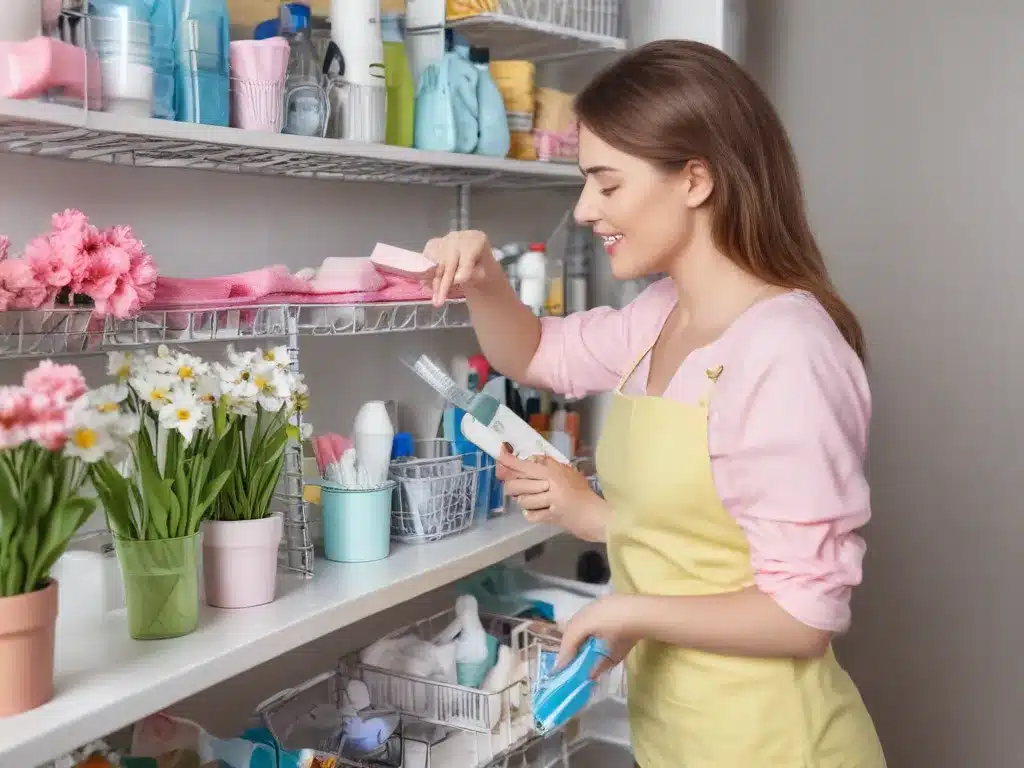Introduction
Spring cleaning is a time-honored tradition that many of us look forward to each year. It’s an opportunity to refresh our living spaces, declutter, and start the new season with a clean slate. However, traditional cleaning products can often contain harsh chemicals that can be harmful to our health and the environment. That’s why at AdamCleaning.uk, we’ve created a non-toxic spring cleaning checklist to help you tackle your cleaning tasks without compromising your safety or the planet’s well-being.
Understanding Non-Toxic Cleaning
What are non-toxic cleaning products? Non-toxic cleaning products are formulated without harsh chemicals such as ammonia, chlorine, and phosphates. These products are often made from natural ingredients like vinegar, baking soda, and plant-based surfactants, making them safer for you, your family, and the environment.
The benefits of using non-toxic cleaning products include:
-
Improved indoor air quality: Traditional cleaning products can release volatile organic compounds (VOCs) into the air, which can contribute to poor indoor air quality and potential health issues like headaches, respiratory problems, and allergic reactions. Non-toxic cleaning products are designed to minimize these harmful emissions, creating a healthier living environment.
-
Reduced environmental impact: Many conventional cleaning products contain ingredients that can be toxic to aquatic life and contribute to water pollution when washed down the drain. Non-toxic cleaners are biodegradable and eco-friendly, reducing their impact on the environment.
-
Gentler on surfaces: Some harsh chemicals found in traditional cleaning products can damage or discolor certain surfaces over time. Non-toxic cleaners are often gentler and safer to use on various surfaces, including wood, natural stone, and delicate fabrics.
AdamCleaning.uk’s Non-Toxic Spring Cleaning Checklist
Our non-toxic spring cleaning checklist is designed to help you tackle every nook and cranny of your home while keeping your health and the environment in mind. Here’s what you can expect:
Kitchen
- Countertops and appliances: Baking soda and vinegar make an excellent non-toxic cleaning solution for wiping down countertops, appliances, and removing stubborn grime.
- Oven: Create a paste with baking soda and water to gently scrub the oven’s interior, removing any baked-on food or grease.
- Sink and faucets: Lemon juice and salt can effectively cut through grime and leave your sink and faucets sparkling.
Bathroom
- Toilet: Baking soda and vinegar can effectively clean and deodorize your toilet bowl without harsh chemicals.
- Tub and shower: A mixture of vinegar and dish soap can help remove soap scum and mildew from your tub and shower surfaces.
- Mirrors and glass: Diluted vinegar or a DIY glass cleaner made with rubbing alcohol and water can leave your mirrors and glass surfaces streak-free.
Living Areas
- Floors: Mix warm water with a few drops of castile soap or plant-based floor cleaner to mop hardwood, tile, or laminate floors.
- Furniture and upholstery: Baking soda can help absorb odors and freshen up fabrics, while a mixture of vinegar and water can be used to spot clean upholstery.
- Windows: A solution of water, vinegar, and a few drops of dish soap can effectively clean windows without leaving streaks or residue.
Laundry
- Clothes: Replace traditional laundry detergents with eco-friendly options or make your own using castile soap, washing soda, and borax.
- Stain removal: Lemon juice, baking soda, and vinegar can work wonders on tough stains without the need for harsh chemicals.
- Fabric softener: Add a few drops of essential oils or vinegar to the rinse cycle for a natural fabric softener.
Real-Life Examples and Tips
To illustrate the effectiveness of non-toxic cleaning, let’s look at a real-life example from one of our satisfied customers:
“I was hesitant to switch to non-toxic cleaning products at first, but after trying AdamCleaning.uk’s recommendations, I’m a believer! Not only did my home smell fresh and clean without any harsh chemical odors, but I also noticed a significant improvement in my daughter’s respiratory issues. It’s amazing how something as simple as switching to non-toxic cleaners can have such a positive impact on our health and well-being.”
Here are some additional tips to make your non-toxic spring cleaning experience even more successful:
-
Declutter first: Before you begin cleaning, take the time to declutter and organize your living spaces. This will not only make the cleaning process easier but also help you identify areas that need extra attention.
-
Invest in quality tools: Invest in high-quality microfiber cloths, reusable cleaning pads, and sturdy brushes to ensure efficient and effective cleaning without relying on harsh chemicals.
-
Make your own cleaning solutions: Experiment with DIY non-toxic cleaning solutions using ingredients like vinegar, baking soda, lemon juice, and essential oils. Not only will this save you money, but it also allows you to customize the scents and potency to your liking.
-
Prioritize ventilation: When using any cleaning products, even non-toxic ones, ensure proper ventilation by opening windows and using fans to circulate fresh air.
-
Be patient and persistent: Some stubborn stains or grime may require a bit more elbow grease and patience when using non-toxic cleaners. Don’t be discouraged; the extra effort is worth it for a healthier living environment.
Conclusion
Spring cleaning doesn’t have to be a daunting task filled with harsh chemicals and unpleasant fumes. By following AdamCleaning.uk’s non-toxic spring cleaning checklist, you can enjoy a fresh, clean home without compromising your health or the environment. So, embrace the power of natural ingredients, and let’s make spring cleaning a breeze together!







